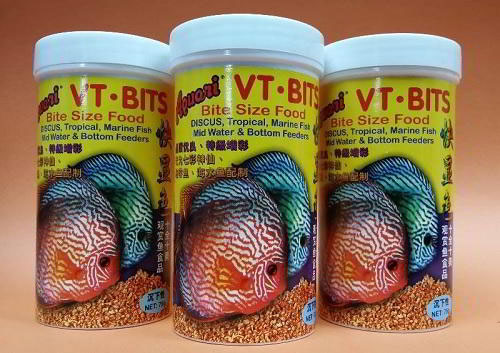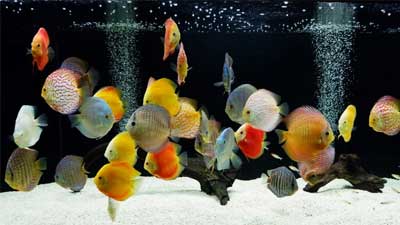Discus Fish Tips
Discus Fish Tips
Originated in Amazon Basin, the discus fish are brilliantly colored and distinctively shaped. They are a popular addition to freshwater aquariums due to their beautiful and glamorous appearance. The sides of the fish are frequently patterned in shades of green, red, brown, and blue. Some of the more brightly marked variants are the result of selective breeding by aquarists and most likely do not exist in the wild. These colourful tank inhabitants require a higher level of care as compared to other aquarium fish, and are thus less suitable for beginners.
Discus are warm water fish and thrive in waters between 28°C and 31°C (82°F – 88°F). The ideal pH range should be between 6 and 7. Anything beyond the range might cause discus stress. There are, however, certain discus species that thrive in waters with pH values as high as 7.8. Relative water hardness should be between 1dH and 8dH so as to replicate relatively soft water conditions similar to the amazon. Singapore’s tap waters tend to be soft, but aquarists should always measure the water hardness before adding in the fish. Adding driftwood can help soften the water, but it will also stain the waters due to the presence of tannin.
Home Sweet Home

Homes for discus fish are usually laced with plants. Planted tanks with CO2 injection usually exhibit a lower pH value of around 6.8 which is ideal for discus fish. Suitable aquatic plants include Anacharis, Pygmy Chain Sword, Amazon Sword and Anubias nana. These plants are easy to care for and are adaptive to a wide range of water temperatures and hardness. A mixture of long stem plants and lower foreground plants help create an environment that is similar to the amazon. Driftwood is also an excellent compliment that will help these fish feel at home while enhancing the aesthetics of the aquarium.
Alternatively, discus fish can also be housed in a bare bottomed tank. While an empty tank is not as aesthetically pleasing, doing so will allow for easier removal of feaces and rotting debris from the tank, and more stable water quality for the fish. A bare bottomed tank is highly recommended for breeding discus fish as it provides a safe environment for the young and easy aquarium maintenance. Most fish farms practice housing discus fish in empty tanks so that it is more time and cost efficient to care for the fish.
Roomies

Discus fish are highly social and prefer to live in shoals. They get their security from being part of a shoal. It is a bad idea to keep discus fish in groups of less than eight to ten as it might deprive these fish of social interaction and cause stress. To add variety to the aquarium, it is recommended to keep discus fish with smaller tetras such as neon, cardinal, ember, harlequin and rummynose tetras. These species are peaceful and prefer to move in large groups. Before mixing fish in the aquarium, it is recommended to be mindful of species who tend to be territorial or predatory in character. As with any fish, there is a risk of cross-contamination so checks must be done timely to avoid problems.
Diet

Like most other species, discus fish will eat almost anything that can fit in their mouths. However, due to their carnivorous nature they do best with blood worms and beef heart. Pellets and flakes can help provide them with vitamins and minerals. Wild discus feed mainly on small fish and fry, alongside larvae and other aquatic insects and invertebrates. They tend to eat relatively slowly. As a guideline, the discus diet should be rich in protein. Frozen beef heart is an excellent treat for discus but the disadvantage is that it can pollute the aquarium so be sure to conduct regular maintenance and turn off the filters during feeding time.
The basic rules to keep your discus healthy are:
- Keep them in groups, as they are a shoaling species
- Maintain a consistent pH and hardness
- Feed them well, discus eat a lot!

